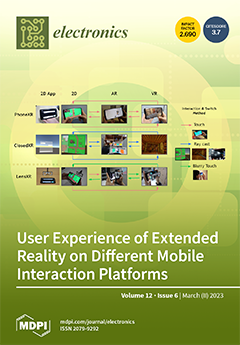The aim of this paper is to analyze statistical characteristics of the new differential communication scheme based on chaotic radio pulses in the presence of additive white noise (Gaussian) and using various distributions of instantaneous values of the chaotic signal. The characteristic feature of the presented scheme is the usage of significantly shorter time delays compared to the classical differential chaotic shift keying (DCSK) scheme. In order to investigate noise immunity of the direct chaotic differential communication (DC
2) scheme, numerical statistical simulation is performed in terms of the bit error probability (BER) of the transmitted information. Then, the results of this simulation are compared to the results of analytical research. It is shown that due to the inherent internal noises of the scheme, the bit error probability (BER) for arbitrarily large values of the ratio of the signal energy to the Gaussian noise spectral density (
Eb/
N0) is higher than 10
−3 for the values of processing gain
K < 30 for any distribution of instantaneous values of the chaotic signal. With the increase of the
K values, there is a rapid decrease in BER in a system with a channel without white noise. Numeric simulation is performed, which verifies and clarifies the analytical estimates obtained earlier regarding the bit error probabilities as functions of processing gain and ratio of the signal energy to the Gaussian noise spectral density. The minimum values of
Eb/
N0 are obtained, which provide necessary error probabilities with the processing gain set. It is shown that with a high processing gain (
K > 30), the communication scheme considered here operates effectively both in a channel without fluctuation noises and in a channel with additive white Gaussian noise. The statistical characteristics of the proposed scheme do not depend on the choice of a particular distribution of instantaneous values of the chaotic signal. Taking into account that the scheme uses short delays, which do not depend on the processing gain of the used signal and are easily implemented, for example, on fragments of a high-frequency cable, the results obtained show good prospects for its implementation in a physical experiment.
Full article


